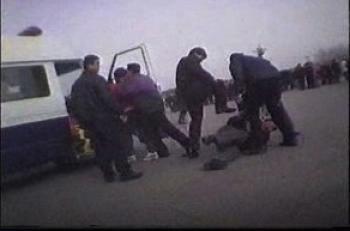
“Life there was like being in a den of monsters, but torture couldn’t change us.”
This is how Canadian artist and sculptor Kunlun Zhang describes his time in a Chinese labour camp in Beyond the Red Wall: The Persecution of Falun Gong, a one-hour documentary airing on CBC Newsworld Nov. 6.
Red Wall recounts how Zhang, a Falun Gong practitioner, was arrested while on a return visit to China in 2002. He was sentenced without trial to three years in a labour camp, where he was severely beaten, repeatedly shocked with an electric baton, and brainwashed in an attempt to have him relinquish his faith.
Liberal Member of Parliament Irwin Cotler, who later became Minister of Justice, teamed up with human rights lawyers and Amnesty International to rescue Zhang, a Canadian citizen and a visiting professor who once taught at McGill University. Zhang’s case became a cause celebre, and before long he was safely back in Canada.
However, untold thousands of Falun Gong practitioners in China haven’t been so lucky. Routinely jailed without trial, they face the same sort of brutality inflicted on Zhang simply because they adhere to Falun Gong, a spiritual discipline and meditation practice.
Red Wall documents how Falun Gong became wildly popular in the early 1990s as part of the “qigong boom” that swept China in the spiritual vacuum left behind by the Cultural Revolution.
Chinese Sports Ministry estimates pegged the number of practitioners in the range of 50-70 million. Hundreds would gather in parks and squares across the country to do the Falun Gong exercises each morning on their way to work.
The “great law of the universe” as taught by Falun Gong founder, Li Honzghi, seemed to strike a deep chord in the collective Chinese heart. Truthfulness, Compassion, and Tolerance, the guiding principles of the practice, were catching on in China.
At that time, the Chinese regime sanctioned Falun Gong and many Communist Party officials practiced it. People found that even severe illnesses disappeared with constant practice. As the country’s public health system began to crumble in the 1990s, many people turned to Falun Gong and other forms of Qigong to deal with their health problems.




